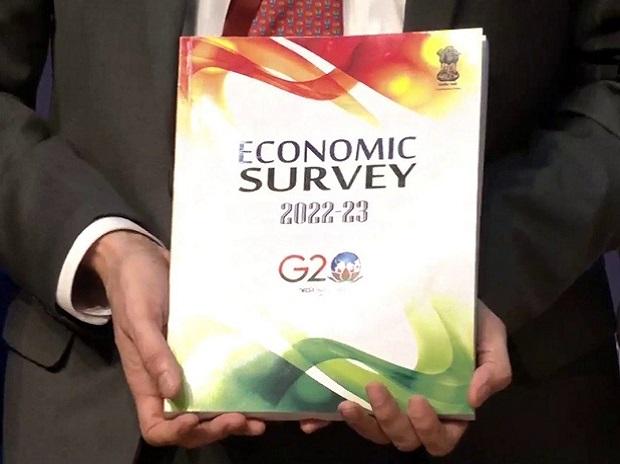[ad_1]
The 2022-23 Economy Survey paints a conservative growth outlook, emphasising that the country’s economic fundamentals remain strong. The Survey has projected India’s economy to grow 6.5 per cent in 2023-24, compared to 7 per cent this fiscal and 8.7 per cent in 2021-22. In nominal terms, gross domestic product (GDP) growth is expected to be 11 per cent in the next fiscal year.
Citing the continuing Russia-Ukraine crisis and the trend of major central banks reaffirming their hawkish stance on inflation, the Survey predicts the global economy may be characterised by low growth in FY24. As per IMF’s World Economic Outlook, October 2022, global growth is forecast to slow from 3.2 per cent in 2022 to 2.7 per cent in 2023. A slower growth in economic output coupled with increased uncertainty will dampen trade growth. This is seen in the lower forecast for growth in global trade by the World Trade Organisation, from 3.5 per cent in 2022 to 1.0 per cent in 2023.
However, the Survey believes the scenario of subdued global growth presents two silver linings for India — oil prices will stay low, and India’s current account deficit will be better than projected. This means the overall external situation will remain manageable.
The Survey, tabled by finance minister Nirmala Sitharaman today, said the economy has recovered from the financial system stress experienced in the second decade of the millennium, evidenced by rising nonperforming assets, low credit growth and declining growth rates of capital formation caused by excessive lending witnessed in the first decade-plus.
Compensating for the private sector’s caution in capital expenditure, the government helped raise budgeted capital expenditure by 2.7 times in the last seven years, from FY16 to FY23, to re-invigorate the Capex cycle.
Aided by healthy financials, incipient signs of a new private sector capital formation cycle are visible, the Survey said.
Meanwhile, while commodity prices have retreated from record highs, they are still above pre-Ukraine-conflict levels. The Survey cautions this might usher in unfavourable developments in the current account balance if strong domestic demand continues amidst high commodity prices, contributing to India’s mounting import bill. The slackening of global demand, on the other hand, further contributes to plateauing export growth. This spells trouble for the Rupee, which might come under depreciation pressure when the current account deficit widens further.
The Survey lists four major factors behind India’s growth outlook, including limited health and economic fallout for the rest of the world from the current surge in Covid-19 infections in China and, therefore, continued normalisation of supply chains and inflationary impulses from the reopening of China’s economy turning out to be neither significant nor persistent. (See Box)
Commenting on the global economy’s direct influence on India’s growth projections, Rumki Majumdar, Economist at Deloitte India, says, “The global slowdown has already been factored into investment decisions. India should now prepare to bounce back when the global economy recovers. Government must pursue policies to cushion the economy to reduce the vagaries of the global business cycle and focus on a greater degree on building infrastructure, creating an industrial base, and encouraging new business formation.”
A strong recovery in China could also imply higher commodity demand, resulting in rising prices. This could mean that fight against inflation for India will likely continue. She added that the right mix of fiscal-monetary policies would be key to building a resilient economy.
[ad_2]
Source link



